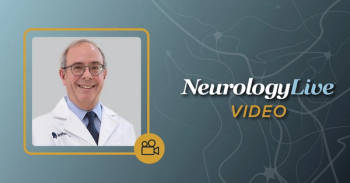
Early Focal Epilepsy Identification May Prevent Injury Pre-Diagnosis

For those with nonmotor seizures at onset who developed seizures with motor involvement later, the median number of days to diagnosis from motor symptom onset was only 13 days, compared to 616 days for the overall nonmotor group.
New study results suggest that overcoming the challenges obstructing earlier diagnosis of focal epilepsy can prevent the morbidity-related consequences of the delays in identifying new-onset disease, such as motor vehicle accidents.1
Ultimately, the findings of the prospective, observational, multicenter study, dubbed the Human Epilepsy Project, point to a gap in treatment, specifically for those individuals who experience nonmotor seizures at epilepsy onset. Between the 246 participants with nonmotor seizures and the 201 participants with motor seizures at onset, those with nonmotor seizures experienced a delay in median time to diagnosis from first seizure tenfold that of those with motor seizures (P <.001).2
Notably, more patients with new-onset focal disease presented with initial nonmotor seizures than motor seizures (55% vs. 45%, respectively; P = .04). As well, the majority of injuries reported by patients prior to diagnosis for those who presented initially with nonmotor seizures occurred in those who ultimately developed motor seizures (92 of 167 patients; 55.1%). Those who never developed motor seizures were less likely to be injured (8 of 79; 10.1%) by a significant margin (P <.001).
“Our study highlights how common the early and subtle signs of focal epilepsy are. We must do a much better job of recognizing them before people go undiagnosed, untreated, and with the potential to cause harm,” said senior investigator Jacqueline A. French, MD, professor of neurology, and director, translational research and clinical trials for epilepsy, NYU Langone Health, in a statement.
The number of patients with injuries reported prior to diagnosis in the nonmotor group (n = 100) were similar to those in the motor group (n = 99), and the severity of those injuries—deemed mild (nonmotor: 70; motor: 79), moderate (nonmotor: 9; motor: 12), or severe (nonmotor: 2; motor: 4)—did not differ significantly. However, of the 23 motor vehicle accidents reported, the vast majority (n = 19; 82.6%) occurred in patients with undiagnosed nonmotor seizures.
WATCH NOW:
That group with undiagnosed nonmotor seizures reported a median time to diagnosis of 654 days (interquartile range [IQR], 164–6556), and had a median of 20 seizures prior to diagnosis (IQR, 7–254). Of those in the nonmotor seizure group who went on to develop seizures with motor involvement, the median number of days to diagnosis from motor symptom onset was only 13days (IQR, 0-86 days).
For the total 447-patient study cohort, the median number of days from first seizure to diagnosis was 219 days (IQR, 49–999). Those in the motor group reported a median time of 60 days (IQR, 8–220) compared to the drastically longer 616 days (IQR, 188.3–2110.3) for those in the nonmotor group (P <.001).
Of those in the motor seizure group, 181 patients (90%) experienced focal to bilateral tonic-clonic seizures while 20 (10%) never experienced motor seizures that evolved to bilateral tonic-clonic seizures. Those patients who never experienced bilateral tonic-clonic seizures in the motor group still experienced a significantly shorter median time to diagnosis of 38.5 days (IQR, 8.8–500.8) compared to the nonmotor seizure group (P <.001).
“To improve diagnoses, it is critical that physicians not overlook the possibility of a seizure, particularly during emergency department visits and after any kind of car accident,” lead investigator Jacob Pellinen, MD, assistant professor of neurology, University of Colorado School of Medicine, said in a statement. “Patients need to partner with their physicians and be honest about any recurring abnormal or unusual symptoms they experience.”
In total, 190 participants (43%) in the overall study population experienced initial seizures with persevered awareness while 239 (54%) experienced loss of awareness, and 18 (3.8%) had an unknown level of awareness. Most of those in the nonmotor group had preserved awareness (n = 176; 71%), whereas most of those in the motor group experienced loss of awareness (n = 181; 90%).
Among those with nonmotor seizures, those with preserved awareness were shown to correlate with significantly longer delays to diagnosis (n = 176; median days to diagnosis, 801 [IQR, 224.5–2641.5), though diagnosis was also delayed in those with impaired awareness (n = 59; median days to diagnosis, 266 [IQR, 100–1017]; P <.001). Among participants with motor seizures, those with preserved awareness had a longer time to diagnosis, but it was not significant. There were 14 participants with preserved awareness, and their median time to diagnosis was 114.5 days (IQR, 5.5–567) compared to 44 (IQR, 7.5–203.5) in the 181 participants with impaired awareness (P = .35).
"Improving recognition of focal epilepsy, particularly when it manifests as non-motor seizures, will be critical in closing the treatment gap highlighted in our study," Pellinen told NeurologyLive. "A major takeaway from our study is that there is substantial under-recognition of non-motor seizures by patients, family, and healthcare providers. Educational initiatives for the public, healthcare trainees, and healthcare professionals, would undoubtedly improve the lives of many people with new-onset focal epilepsy."
REFERENCES
1. Pellinen J, Tafuro E, Yang A, et al. Focal nonmotor versus motor seizures: The impact on diagnostic delay in focal epilepsy. Epilepsia. Published online October 20, 2020. doi: 10.1111/epi.16707
2. Focal Epilepsy Often Overlooked. News release. New York, NY. NYU Langone. Published October 20, 2020. Accessed October 20, 2020. https://nyulangone.org/news/focal-epilepsy-often-overlooked,
Newsletter
Keep your finger on the pulse of neurology—subscribe to NeurologyLive for expert interviews, new data, and breakthrough treatment updates.




























